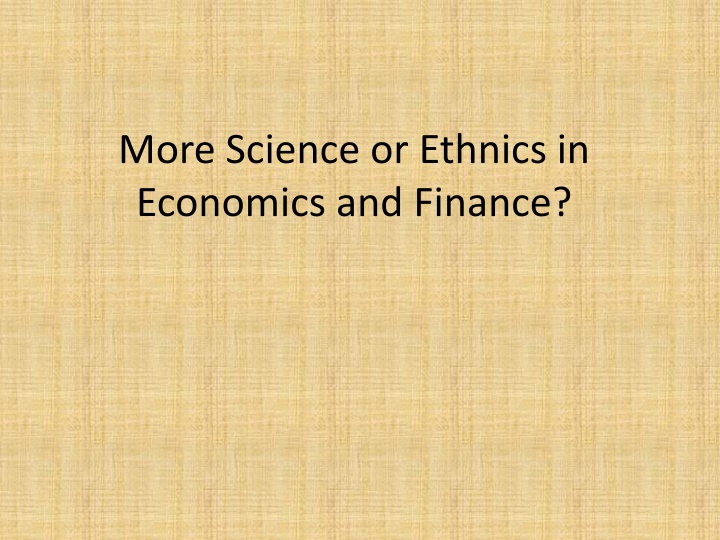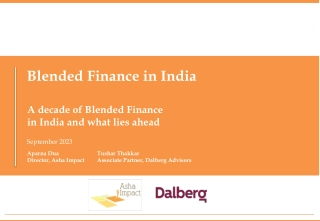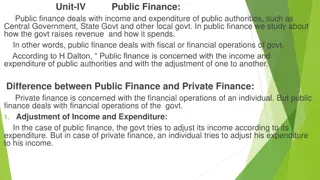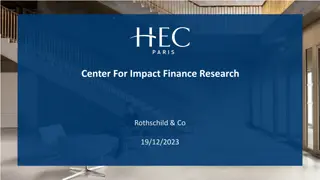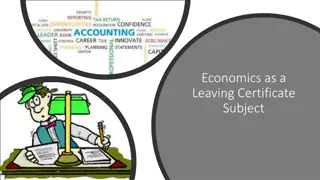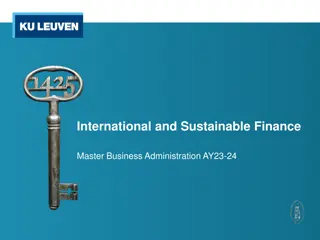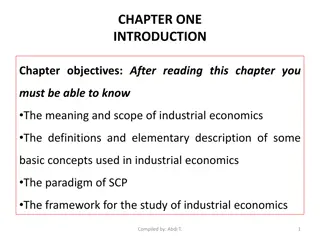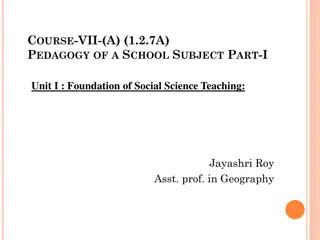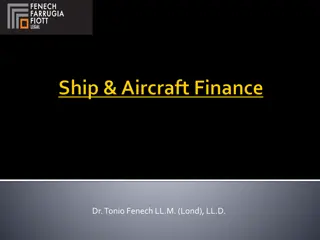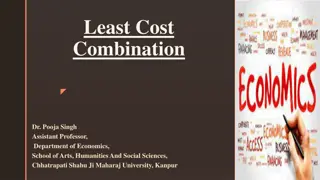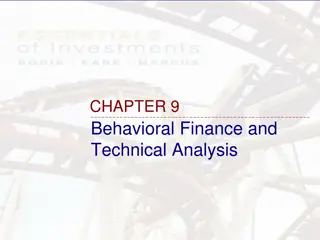More Science or Ethnics in Economics and Finance?
In the realm of economics and finance, the balance between scientific rigor and ethical considerations is a constant debate. The images and data presented offer insights into this ongoing discourse, highlighting the intersection of data-driven analysis and moral implications in financial decision-making. From the impact of technology on disasters like Fukushima to the complexities of derivative transactions, these visuals raise important questions about the role of science and ethics in shaping our economic and financial systems.
Download Presentation

Please find below an Image/Link to download the presentation.
The content on the website is provided AS IS for your information and personal use only. It may not be sold, licensed, or shared on other websites without obtaining consent from the author.If you encounter any issues during the download, it is possible that the publisher has removed the file from their server.
You are allowed to download the files provided on this website for personal or commercial use, subject to the condition that they are used lawfully. All files are the property of their respective owners.
The content on the website is provided AS IS for your information and personal use only. It may not be sold, licensed, or shared on other websites without obtaining consent from the author.
E N D
Presentation Transcript
More Science or Ethnics in Economics and Finance?
Nowadays the military plus civilian deaths rate does not even touch the historical low point, not to mention the absolute number due to population growth! It s about fact, not scientism, my friends.
Annual estimates of battle-related deaths worldwide, 1989-2013 (data source: UCDP)
UCDP Uppsala Conflict Data Program Number of Conflicts http://ucdp.uu.se/#/encyclopedia Number of Deaths http://ucdp.uu.se/#/exploratory
Wage our hope on Science Before Fukushima, Japanese scientists and engineers assured that disaster like this would never happen. In the name of Technology and Science!
Black-Scholes model 1998 Long Term Capital Management
Derivatives: Don Quixote-like (or smart ass) endeavor to conquer uncertainty Derivatives are not transactions in shares of stock or interest rates, in human lives, in houses vulnerable to fire, or in home mortgages. The product uncertainty itself. (Peter L. Bernstein Against The Gods 314) The financial solvency of these institutions supports the financial solvency of the world economic system itself. Every single day, they are involved in millions of transactions involving trillions of dollars in a complex set of arrangements whose smooth functioning is essential. The margin for error is miniscule. Poor controls over the size and diversification of exposures are intolerable when the underlying volatility of the derivatives is so high and when so much is at stake beyond the fortunes of any single institution. (Bernstein 327) in derivative transaction is
We cannot enter data about the future into the computer because such data are inaccessible to us. So we pour in data from the past to fuel the decision- making mechanisms created by our models, be they linear or nonlinear. But therein lies the logician s trap: past data from real life constitute a sequence of events rather than a set of independent observations, which is what the laws of probability demand. History provides us with only one sample of the economy and the capital markets, not with thousands of separate and randomly distributed numbers. Even though many economic and financial variables fall into distributions that approximate a bell curve, the picture is never perfect. Once again, resemblance to truth is not the same as truth. It is in those outliers and imperfections that the wildness lurks. Finally, the science of risk management sometimes creates new risks even as it brings old risks under control. Our faith in risk management encourages us to take risks we would not otherwise take Derivative financial instruments designed as hedges have tempted investors to transform them into speculative vehicles with sleigh-rides for payoffs and involving risks that no corporate risk manager should contemplate. (Bernstein 335)
Basel II: risk management Three pillars: (1) risk-sensitive minimum capital requirements, (2) supervisory review and (3) market discipline. Quantifiable risks: credit risk, operational risk, market risk An OECD study suggests that bank regulation based on the Basel accords encourage unconventional business practices and contributed to or even reinforced adverse systemic shocks that materialised during the financial crisis. According to the study, capital regulation based on risk-weighted assets encourages innovation designed to circumvent regulatory requirements and shifts banks' focus away from their core economic functions. (wikipedia, Basel II )
Value at Risk: risk measurement VaR has been controversial since it moved from trading desks into the public eye in 1994. Nassim Taleb claimed VaR: Ignored 2,500 years of experience in favor of untested models built by non- traders Was charlatanism because it claimed to estimate the risks of rare events, which is impossible Gave false confidence Would be exploited by traders In 2008 David Einhorn in Global Association of Risk Professionals Review compared VaR to "an airbag that works all the time, except when you have a car accident." He further charged that VaR: Led to excessive risk-taking and leverage at financial institutions Focused on the manageable risks near the center of the distribution and ignored the tails Created an incentive to take "excessive but remote risks" Was "potentially catastrophic when its use creates a false sense of security among senior executives and watchdogs. (Wikipedia Value at Risk )
Recipe for Disaster Li's formula, known as a Gaussian copula function, looked like an unambiguously positive breakthrough, a piece of financial technology that allowed hugely complex risks to be modeled with more ease and accuracy than ever before. With his brilliant spark of mathematical legerdemain, Li made it possible for traders to sell vast quantities of new securities, expanding financial markets to unimaginable levels. Felix Salmon, Recipe for Disaster: The Formula That Killed Wall Street, Wired, 23.2.09
Probability Specifically, this is a joint default probability the likelihood that any two members of the pool (A and B) will both default. It's what investors are looking for, and the rest of the formula provides the answer. Survival times The amount of time between now and when A and B can be expected to default. Li took the idea from a concept in actuarial science that charts what happens to someone's life expectancy when their spouse dies. Equality A dangerously precise concept, since it leaves no room for error. Clean equations help both quants and their managers forget that the real world contains a surprising amount of uncertainty, fuzziness, and precariousness. Copula This couples (hence the Latinate term copula) the individual probabilities associated with A and B to come up with a single number. Errors here massively increase the risk of the whole equation blowing up. Distribution functions The probabilities of how long A and B are likely to survive. Since these are not certainties, they can be dangerous: Small miscalculations may leave you facing much more risk than the formula indicates. Gamma The all-powerful correlation parameter, which reduces correlation to a single constant something that should be highly improbable, if not impossible. This is the magic number that made Li's copula function irresistible.
Smart Ass fooling with probability From attempt to manage risk to blatantly ignore risk According to these financial models: LTCM 7-sigma event: happens once in 30 billion year. 1987 October Black Monday 10-sigma event: unlikely to happen in a billion cycles of the history of the universe 20-sigma event: ten times the total number of elemental particles in the universe Subprime crisis 25-sigma event: add 52 zero to the 20-sigma event, chance of winning 21 UK Lotto prices in a row From John Lanchester, Whoops!! Chap. 5
Financial Engineering or Profiteering? George Soros: Financial engineers claimed they were reducing risks through geographic diversification: in fact they were increasing them by creating an agency problem. The agents were more interested in maximizing fee income than in protecting the interests of bondholders. derivatives only serve to improve the profit margin of the financial engineers designing them. Custom-made
Some economic genocide craps IMF, World Bank Structural Condionalities Estimated 2 million (The Unholy Trinity) Russia
Nutritional/biological Expulsion 795 million people in the world do not have enough food to lead a healthy active life. WFO Including under-nutrition, micro malnutrition: 1 Billion (Raj Patel, Stuffed and Starved)
A New Theory of Value Go back to Marx in order to transcend Marx Use Value/Exchange Value Interactive Value Rethink money as a form of power: command or claim to social wealth
We Need More Ethnics not Science in Economics and Studies of Finance
